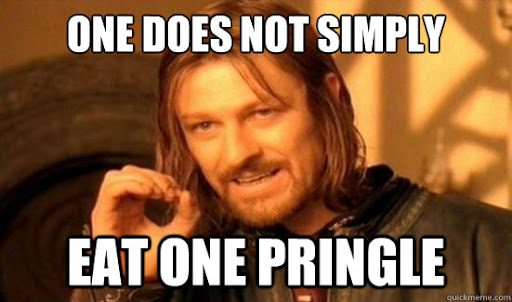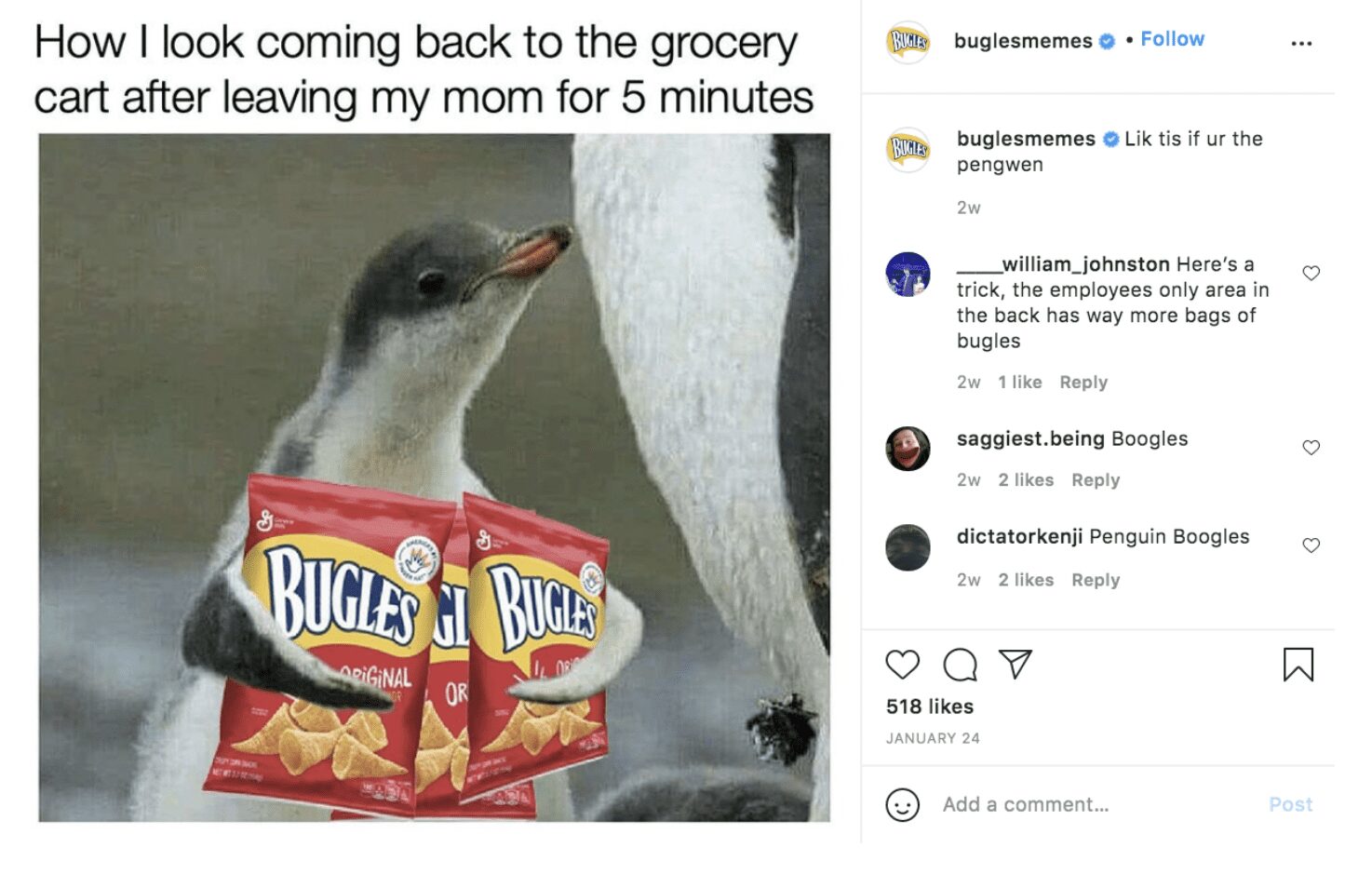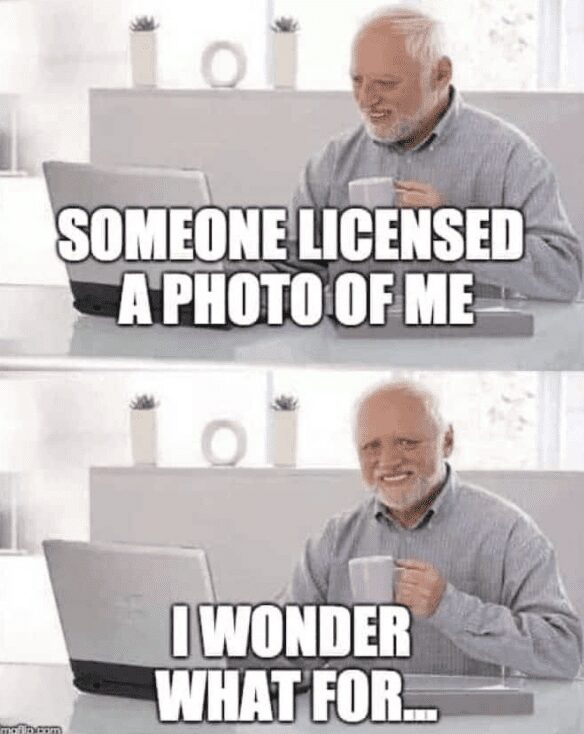And marketers have noticed.

For one, we’re following studies showing memes as part of owned media campaigns massively over-performing compared to traditional owned media images. One study from Asian markets shows owned media content pulling 5% engagement on social media, while meme content comes in at 60%. We’re also seeing data that click-through rates of meme-centric brand campaigns are 8% higher than traditional content.

You can have this one for free, Pringles.
Memes Communicate What’s Normal
Memes imply universal, ubiquitous and instantaneous understanding of the ideas they represent. Memes, by their very nature, create and reinforce social norms around ideas. And, using comedy, they can help a tough sell go down easier.

Lots of great public health communication in the last year that reinforced tough messages with memes.
Brands regularly building memes into their marketing.

SparkNotes has amassed more than 370,000 Twitter followers by creating memes that reference literature, cleverly merging the classic with the contemporary and defying the stuffiness some audiences might associate with the brand. (source: https://twitter.com/SparkNotes/status/1447567508656082945)

Netflix regularly promotes its new offerings (in this case, a recent thriller called The Guilty) by turning its own content into memes. Writers even attributed the popularity of Netflix’s 2018 film Bird Box to memes and viral marketing.
The Beard Club
A preferred men’s grooming brand, The Beard Club stays highly topical with current events and pop-cultural phenomena in weekly posts. They also often respond with memes in the comments — both points on display in this post from the recently popular Squid Games.


TSA
Meme marketing isn’t exclusive to consumer brands — government agencies are using it great effect too! TSA’s Instagram in particular is loaded with user-generated shares and brand posts that positively reinforce the many rules of air travel with light-hearted content from travelers, while also humanizing what can be perceived as a cold and clinical organization. Take a look at examples on their account.



One more thing:
Be mindful of the images you’re repurposing under the auspices of your brand. Recycling a familiar meme image, like the ones above, with your own added context likely falls under the umbrella of fair use, but you shouldn’t copy and paste another person’s or company’s meme whole cloth and pass it off as your creation. Even if it doesn’t constitute copyright infringement, it’s a bad look.
- They’re inexpensive. It’s free to share a meme generated by a user, and many of the ones you may consider are in the public domain under fair use. Memes don’t require a budget heavy production, just an iPhone and a funny idea.
- They build goodwill. Sharing memes generated by your community shows appreciation for their loyalty and that you pay attention to the ideas they champion on your behalf.
- They’re sharable. Over 50% of consumers 13 – 35 send memes to each other every week, 30% every day. Other age brackets aren’t far behind.
Five Tips to Get Started with Meme Marketing
Find the right tone. Believe it or not, there’s a fine science behind creating a memorable meme. First things first, you need to decide if your brand or product would be compatible with the meme in question. It’s important to avoid cognitive dissonance: A campaign shedding light on a sobering topic or centered on a serious social message probably doesn’t lend itself well to jokes. Audiences might conflate your attempts at humor with misplaced snark or glibness. See:

2. Be relatable. Customers should be able to recognize themselves in the observations expressed by the meme. If you’re trying to capture a Gen Z audience, for example, it certainly helps to have a savvy Gen Z writer involved in the creative process — you run the risk of appearing like an out-of-touch boomer desperately trying (and failing) to appeal to a younger demographic.



We're here to help
If you need help working through communications strategy, media engagement or audience engagement during this time, give us a call. We’re happy to talk strategy and help.

